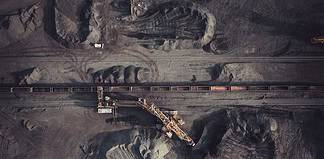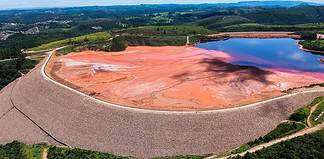By Samantha James
EVEN though many explorers hold tenements along the prospective Yamarna Belt in WA, it is still one of the least explored greenstone belts in the region, sitting at the eastern most edge of the Yilgarn Craton.
A study completed in 2010 by the Geological Survey of WA suggested the Yamarna Belt shares geological similarities with the well-endowed Kalgoorlie Terrane greenstone rocks, and some solid discoveries made by companies such as AusGold have supported this.
However, it is Gold Road Resources’ Gruyere deposit that is proving the Yamarna Belt is capable of hosting WA’s next gold mining hub.
Gold Road owns more than 5000 square kilometres within the Yamarna Belt and a pipeline of discoveries dating back from 2009.
Its flagship Gruyere deposit was discovered in October 2013 and within 10 months yielded a resource estimate of 96.93 million tonnes grading 1.23 grams per tonne of gold for 3.8 million ounces of gold.
In September 2015 Gold Road increased Gruyere’s resource to 5.62moz of gold, bringing the Yamarna project’s total JORC 2012 code compliant mineral resource to 6.07moz of gold.
The company is in the final stages of a pre-feasibility study at the project to outline development options.
Feasible options
Gold Road’s exploration strategy divided its tenements into ‘gold camp scale targets’ between 15kmand 25km in strike length.
The Gruyere and YAM14 deposits were discovered 9km apart on the same structural trend within the first gold camp target, exhibiting two different kinds of mineralisation not seen previously in the Yamarna Belt.
In the time since, Gold Road has uncovered further trends within its second and third camp scale targets including the advanced Central Bore Trend and Attila Trend.
In fiscal 2015 Gold Road completed 154,000m of drilling across six camp scale targets, identifying more than 30 new gold prospects.
While Gruyere is its most advanced project, Gold Road has outlined plans to explore more than 100 deposits.
So far 10 major gold camp scale targets have been investigated, with drilling returning grades of up to 2500g/t of gold.
Gold Road executive chairman Ian Murray said that people were prone to dismissing the potential for big discoveries in the area as the Yamarna Greenstone Belt was further east than existing gold areas; however, Gold Road’s pipeline of successes had opened up the area.
“We believe Gruyere is one of the most significant gold discoveries made in Australia during the past decade,” he said.
“This is a highly promising project for Gold Road – and the Australian gold sector more generally – as Gruyere has been confirmed as the largest undeveloped gold project in the country based on its current resource.”
In August 2015 mineralisation was intersected at almost twice the known depth via a deep stratigraphic hole co-funded by the WA Government’s Exploration Incentive Scheme (EIS).
The EIS deep diamond drill-hole intersected 92.5m of Gruyere porphyry at 0.62g/t of gold at 1150m below the surface.
In fiscal 2015 Gold Road completed Stage 1 of its pre-feasibility study which identified the most optimal development option as a 7.5 million tonne per annum operation with between a 10 and 15 year mine life.
Potential average gold production of around 250,000 ounces per annum of gold would yield between 2.5moz and 3.7moz of recovered gold via conventional gravity and carbon in leach processing methods.
“Gruyere will be developed as a single, large-scale open pit mine using conventional drill, blast, load and haul mining methods,” Mr Murray said.
“The Stage 1 study further substantiated Gruyere as a robust, low cost development project with a very low waste-to-ore strip ratio and excellent metallurgical characteristics.”
Stage 2 will optimise the mine design and schedules using the updated September 2015 mineral resource.
It will also include results from 22,000m of drilling to build confidence in the zone of mineralisation that is targeted for production in the first two years of mining.
Completion is planned in the first quarter of 2016, followed by a final feasibility study to be concluded by the end of the year.
If all goes according to plan, Gold Road planned to pour its first gold in the second half of 2018.
Regional exploration
With more than 30 gold camp targets identified in fiscal 2015, Gold Road has clear exploration plans going forward.
“We don’t know how many more Gruyere analogues exit on the Yamarna Belt, but the potential to grow a new gold province off the back of Gruyere is significant, given the under-explored nature of the Yamarna Belt,” Mr Murray said.
“We are committed to building a pipeline of projects to leverage infrastructure at Gruyere and continue to create value for our shareholders.”
Gold Road has committed to a fully funded exploration program of between $10 million and $12 million across fiscal 2016 including almost 120,000m of drilling across its northern gold camp targets – Dorothy Hills, Sun River-Wanderrie and Pacific Dunes-Corkwood.
In addition, Gold Road holds 70 per cent interest in the southern tenements, covering about 2900sqkm, in joint venture with a subsidiary of Sumitomo Corporation.
About $5 million worth of drilling funded by Sumitomo has discovered several regional prospects; Sumitomo completed the first JV expenditure milestone in March 2015, giving it an initial 30 per cent.
With further exploration Sumitomo can move to a 50 per cent interest.
Sumitomo committed to an additional $2.9 million of exploration expenditure in 2015, funding the first diamond holes at the Smokebush Dolerite prospect within the Riviera-Smokebush camp.
Results were promising and further work was planned for 2016.
Funding
Gold Road is funding the second stage of the pre-feasibility study and the following feasibility study at Gruyere via a strongly supported capital raising completed in June 2015.
The company raised $63 million from August 2014 to September 2015, including a $39.3 million placement which was oversubscribed.
Mr Murray said that the strong backing demonstrated the market’s support for developing the new region in WA.
“Given the current uncertainty in global financial and commodity markets, we believe our strong investor backing demonstrates the market’s understanding of the prospectivity of Yamarna and support for our strategy of moving Gruyere into production quickly to build a platform on which further to explore the region,” he said.
Mr Murray said the market had faith in the possible return on investment capacity of the project, which had been estimated on conservative prices with room for improvement.
“We have been impressed and encouraged by the strength of the possible cash flow generating capacity of Gruyere, which was estimated to be in excess of $550 million in the scoping study using an Australian dollar gold price of $1350/oz.
“We believe this is a conservative estimate as the dollar appears to have stabilised above a base of $1500/oz this financial year, assisted by the softening of the Australian currency against the US dollar.”
Achievements
Gold Road’s work on Gruyere was recognised via four mining awards: the 2014 Gold Mining Journal Explorer of the Year award; the 2014 Mines and Money London Explorer of the Year award; the 2015 AMEC Prospector Award; and Deloitte’s WA Index 2015 Future Reshaper Award.
Mr Murray said the awards were a testament to the company’s on ground activities and investor relations strategy.
“We have built the market’s understanding of the prospectivity of the Yamarna Belt which has helped us emerge as one of the best known and respected gold exploration companies in Australia since the Gruyere discovery,” he said.
“The wealth of talented people we have been able to attract to our growing company, and their disciplined and systematic approach, has helped us deliver on our objectives and meet shareholder expectations.”
Gold Road joined the ASX All Ordinaries Index in March 2015 and gained admission to the ASX300 Index in September.








































